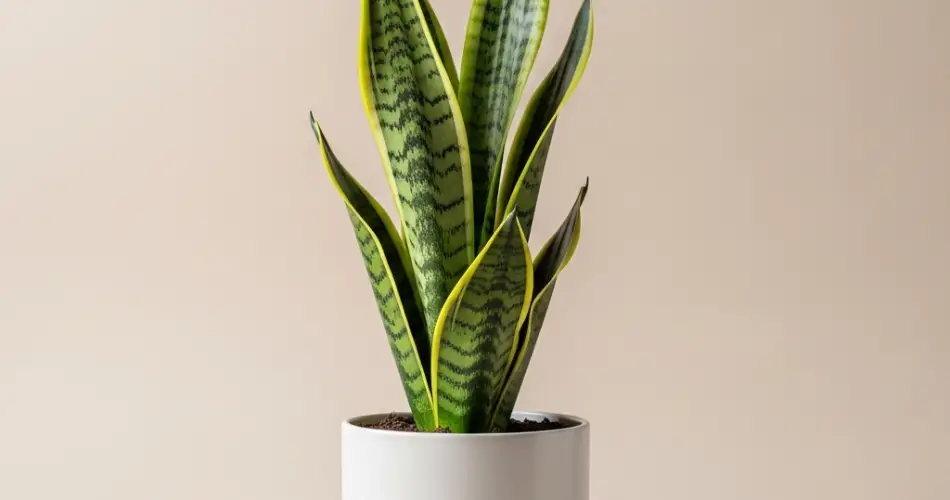If you’re looking to bring structure, elegance, and low-maintenance greenery to your garden, the snake plant (Sansevieria, also known as Dracaena trifasciata) is a top choice. Known for its striking upright leaves and impressive resilience, the snake plant can be more than just a houseplant—it can also be a powerful design element in outdoor spaces when used creatively.
Transforming your garden with snake plants is surprisingly simple. With a little knowledge and intentional placement, you can achieve a lush, modern look that even seasoned gardening experts would admire.
Why Choose Snake Plants for Your Garden?
Before diving into design strategies, it’s worth understanding why snake plants make such excellent garden additions:
-
Hardy and low-maintenance: Snake plants tolerate drought, temperature fluctuations, and poor soil better than many other ornamental plants.
-
Air purifying: Known for their ability to filter indoor air, they also contribute to a healthier outdoor environment.
-
Visually impactful: The upright, sword-shaped leaves add vertical interest and modern texture to any garden layout.
Step 1: Selecting the Right Varieties
There are several types of snake plants, each offering unique visual appeal. For outdoor use, choose sturdy, sun-tolerant varieties such as:
-
Sansevieria trifasciata ‘Laurentii’: Classic green leaves edged in yellow.
-
Sansevieria zeylanica: Tougher and more adaptable, with wavy dark green leaves.
-
Sansevieria cylindrica: Cylindrical leaves that provide architectural structure.
Mixing several types can create contrast in form and color while keeping a cohesive look.
Step 2: Choosing the Right Location
Snake plants thrive in bright, indirect sunlight but can also handle partial shade. In outdoor gardens, plant them in areas that receive morning sun and afternoon shade for optimal growth.
Good planting spots include:
-
Along garden borders
-
In raised beds
-
Around patios or paths
-
In rock gardens
Ensure the soil drains well. Snake plants don’t like sitting in water, so avoid low-lying areas that retain moisture.
Step 3: Preparing the Soil
Snake plants aren’t fussy, but they do best in well-drained, slightly sandy soil. If your garden soil is heavy or clay-like, amend it with coarse sand, perlite, or small gravel to improve drainage.
A simple mix:
-
1 part garden soil
-
1 part coarse sand
-
1 part compost or coconut coir
This blend provides both nutrients and drainage, helping prevent root rot while supporting steady growth.
Step 4: Planting and Spacing
When planting snake plants in the garden:
-
Dig a hole twice the width of the root ball.
-
Place the plant at the same depth it was growing in its pot.
-
Space them about 12 to 18 inches apart, depending on variety, to allow room for growth.
Water thoroughly after planting, then wait until the top inch of soil is dry before watering again.
Step 5: Incorporating Snake Plants Into Design
Here’s how seasoned gardeners make the most of snake plants in their landscape designs:
-
Accent borders: Use snake plants along walkways or garden edges to create clean lines and structure.
-
Container clusters: Group snake plants in decorative pots of varying heights to form a striking focal point on a patio or porch.
-
Modern contrast: Pair snake plants with soft, trailing plants like creeping thyme, ornamental grasses, or succulents for an appealing contrast in texture and form.
-
Vertical gardens: Snake plants are perfect for vertical planters and wall gardens, especially in minimalist or modern outdoor setups.
Step 6: Maintenance and Care
To keep snake plants healthy and vibrant outdoors:
-
Water sparingly: Let the soil dry out between waterings. Overwatering is the most common mistake.
-
Fertilize lightly: Feed with a balanced liquid fertilizer once a month during the growing season (spring and summer).
-
Protect in cold weather: Snake plants are tropical and may not survive frost. In colder regions, grow them in pots so they can be moved indoors during winter.
-
Remove damaged leaves: Prune any wilted or yellowing leaves to keep the plant looking neat and to prevent disease.
Step 7: Propagation for Expansion
Want more snake plants? Propagate them easily through leaf cuttings or division:
-
Leaf cuttings: Cut a healthy leaf into sections, let them dry for a day, then plant in moist soil.
-
Division: Uproot a mature plant and gently separate pups (offshoots) from the base. Replant them in your garden or containers.
This way, you can multiply your plants and expand your garden’s beauty at no cost.
Conclusion
Transforming your garden with snake plants is more than just a trendy move—it’s a practical, sustainable, and visually striking choice. With their bold shape, ease of care, and versatility, these resilient plants can elevate any garden space, whether you’re going for a modern, tropical, or minimalist look. By treating them as key design elements and giving them a supportive environment, you’ll enjoy a thriving garden that mirrors the confidence of an expert horticulturist.



